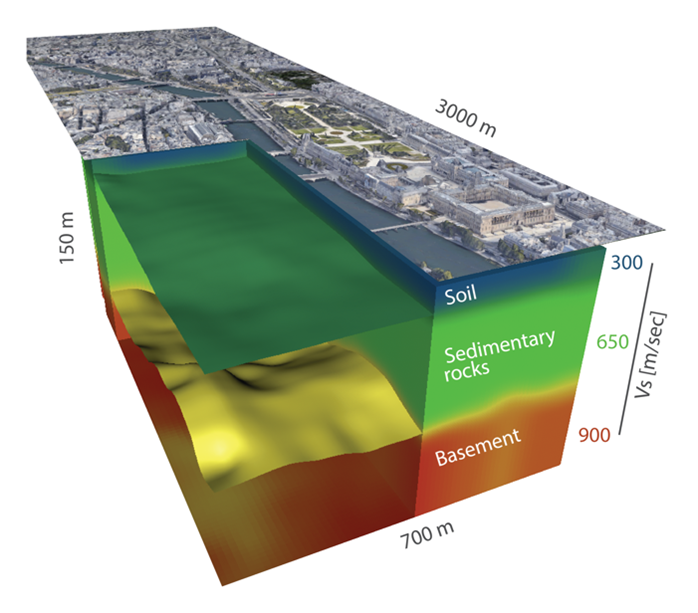
–
–
Ambient noise imaging provides the 3D structure of the Earth’s Interior. It produces a 3D Shear-wave velocity (Vs) model.
Seismic velocities are dependent on the stiffness and density of the ground. Vs is a well-known indicator for site characterization, seismic hazard assessment, and water-table detection.
It applies to many other areas, including depth-to-bedrock surveys, structural mapping, slope stability, dam integrity and void detection.
The method is based on the combination of two techniques:
Ambient noise interferometry
3D surface wave tomography
–
–
Ambient Noise Interferometry
A recently discovered property of the background seismic vibrations, permanently shaking the Earth’s interior (Campillo, 2006).
Correlations of seismic ambient noise recorded at pairs of sensors enable the reconstruction of the response of the Earth between the stations as if one was acting like a ‘virtual’ source and the other as a receiver.
A cumulated day of ambient noise is equivalent to the energy produced by 60 kg of explosive



–
3D Surface Wave Tomography
Seismic signal reconstructed from the ambient noise is dominated by surface waves. Surface waves are sensitive to seismic velocity of the ground at different depths in function of their frequency. This property is widely used in active MASW surveys.
Sisprobe has developed a workflow for shear wave velocity modelling. It implies a two-step inversion process.
The output is a 3D cube showing the main structures in the ground (layering, faulting, intrusions).
It can be used to tie together observations made in wellbores or to help in decisions for your next drilling plan.
